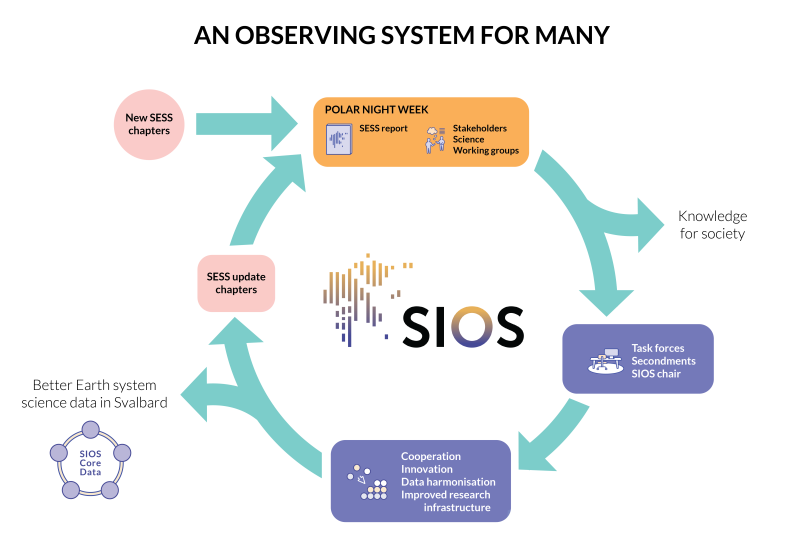SIOS aims to set an example for how to systematically construct observational networks in the Arctic and how joint efforts provide added value to the user community.
SIOS uses several means to achieve this goal. The working groups secure user commitment and impact on the process of improving the existing observing system; the data portal with its access to standardised data facilitates the integration between different research fields and nations; and the State of Environmental Science in Svalbard (SESS) report is the ultimate tool for research based guidance towards optimisation of the Svalbard Observing System for Earth System Science.
The strategic overview, optimisation and integration of the observing system is handled at the science manager level. The final decisions are made by the General Assembly, after recommendations from the Board of Directors who in turn are guided by the Science Optimisation Advisory group and other working groups.

Figure: Concept of the SIOS science wheel to develop an observing system for many uses and users.
SIOS, i.e. the SIOS member institutions, the working groups, and the SIOS Knowledge Centre are the internal forces that move the SIOS wheel forward with the aim to provide better Earth system science data in Svalbard and thus, serve the societal needs related to climate change, pollution and bio-diversity loss. The different aspects of the Earth System and the means to improve the observing system are the preoccupation of many work units, incl. task forces, secondments, and expert residents as the SIOS chair. With the principles of cooperation, innovation and data harmonisation this work ensures that the SIOS community produces relevant long-term data series, the SIOS core data, and improved research infrastructure as basis for new research projects and capacity building. The State of Environmental Science in Svalbard (SESS) report allows research groups from member institutions to identify observational gaps and provide recommendations on how to close those (bottom-up process). The SIOS collaboration culminates in annual gatherings, the Polar Night Weeks. There, the SESS report is released and stakeholders, researchers, and SIOS working groups meet to discuss and finalize consortium activity plans for the following year. The plans are aligned with strategical aspects by the General Assembly (top-down process), allowing the wheel to roll on.



























